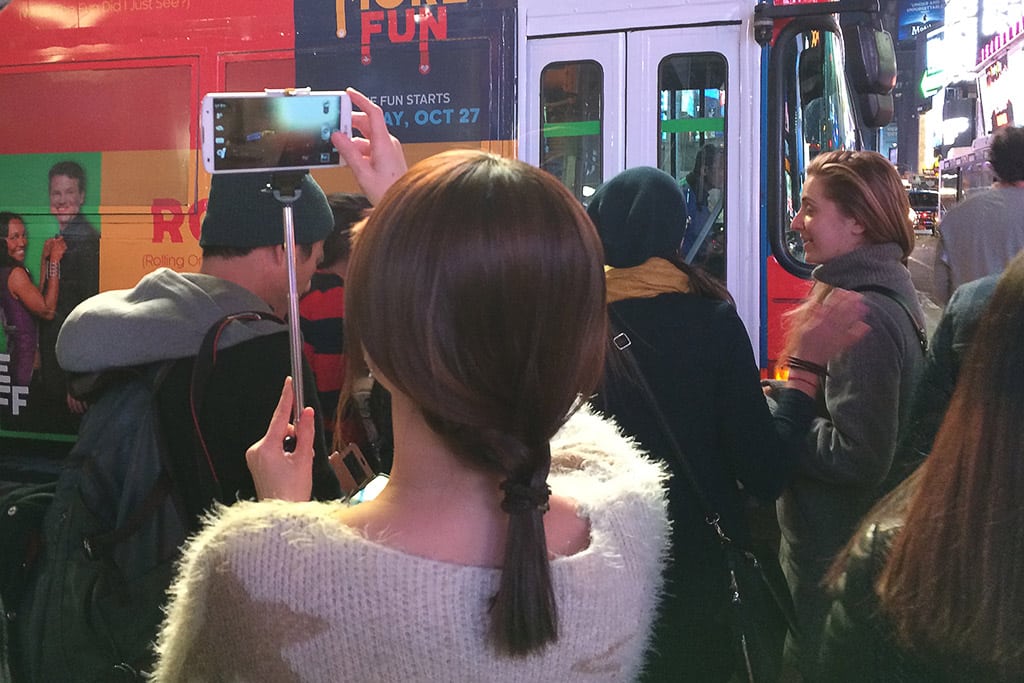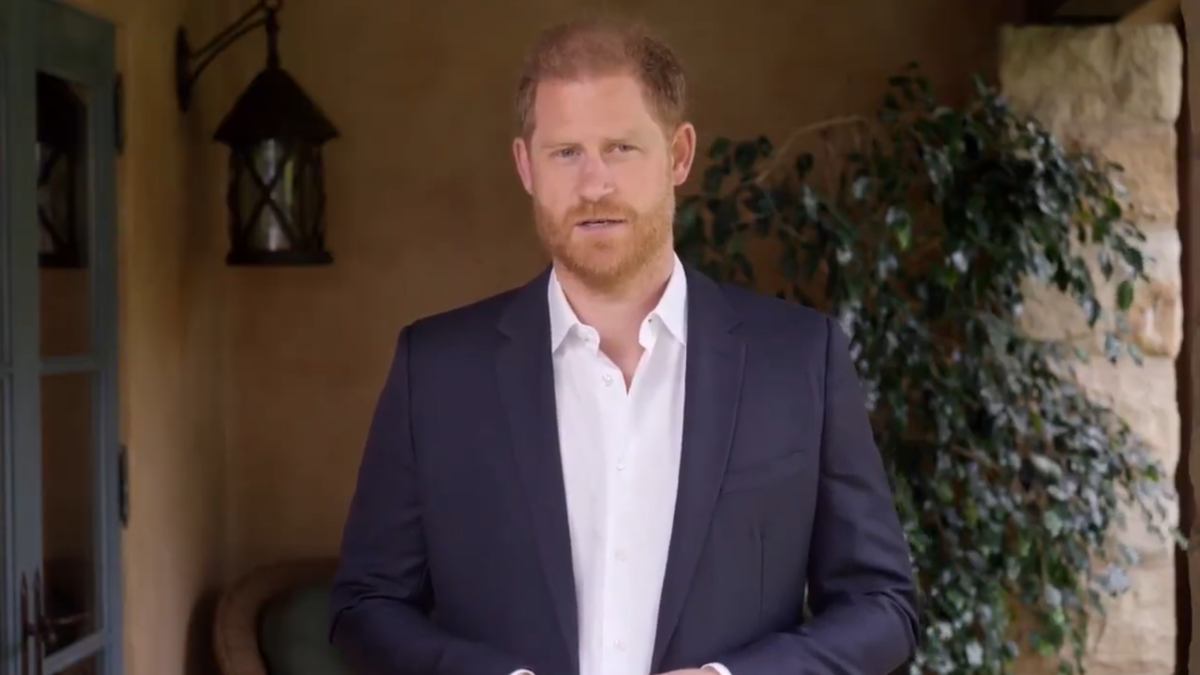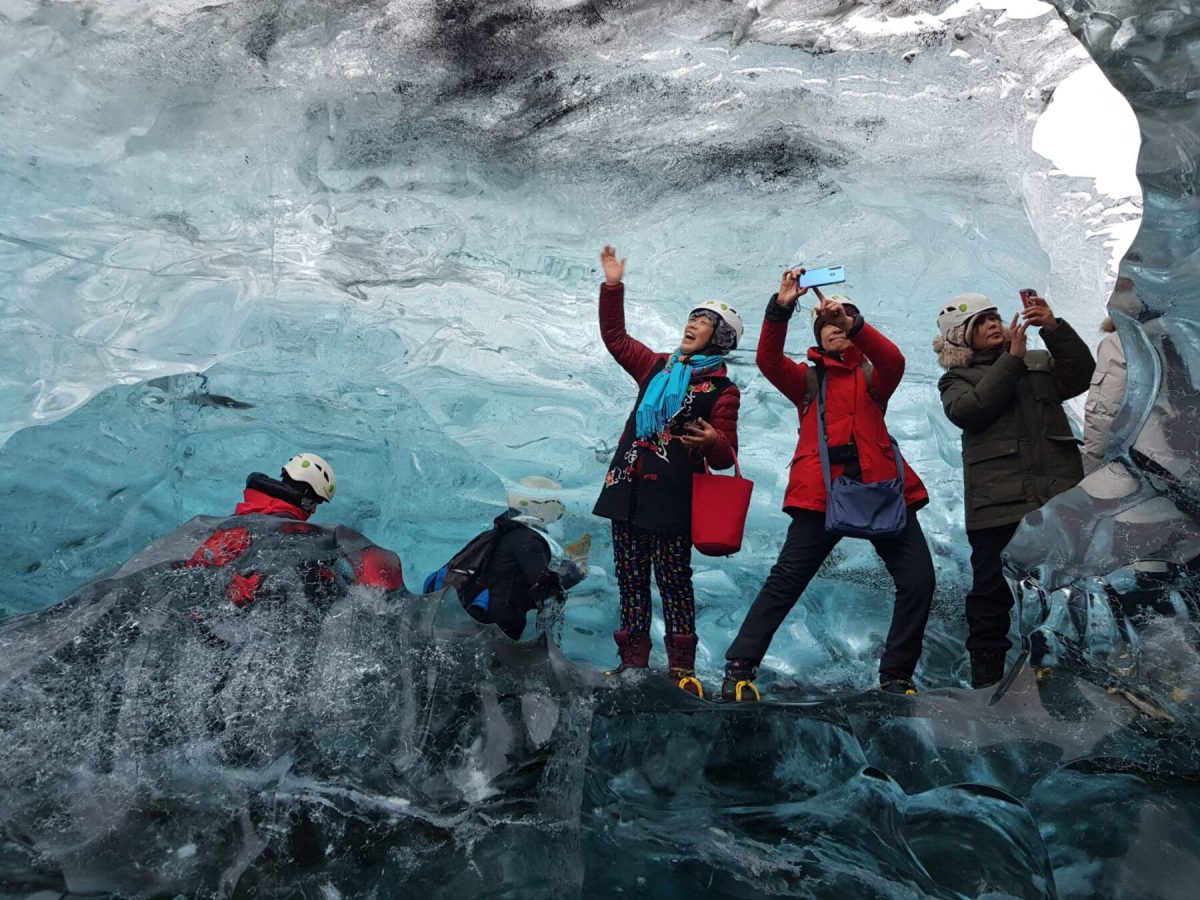New York City Museums Say No to Selfie Stick Shooters

Skift Take
Locals used to be able to spot tourists by the thick guide books that they kept their noses in.
Next it was smartphones that visitors stared at while navigating unknown streets. Finally travelers are looking up, but it’s now towards a camera.
But some of New York City's most respected visitor attractions are now taking a stand against selfie stick, which is simply a long expandable rod that holds users’ smartphones so they can take better individual or group selfies, background and all.
The selfie stick is a relatively new arrival on the global travel scene, debuting on the mass market in early 2014. It’s popularity took hold immediately.
Selfie sticks starting popping up at the Eiffel Tower, on top of the Empire State building and in front of the Taj Mahal. They began causing havoc both due to the street sellers pushing them on people passing by and excited tourists sticking dozens of them in the air, ruining private moments and creating a sea of elevated sticks.
Hard proof of their growing popularity came during the holidays: Nordstrom carried a model of the selfie stick in 118 stores starting in late November and had to reorder the item twice before Christmas. It then sold out of all selfie sticks by the new year. It’s estimated more than 100,000 sticks were sold in December alone.
The Museum of Modern Art, The Guggenheim, and the Cooper-Hewitt Smithsonian Design Museum are three of the museums that have confirmed their restrictions on the social media helpers. Others including the Metropolitan Museum of Art confirm that they’re considering it.
Sree Sreenivasan, chief digital officer at the Metropolitan Museum, shared his insights on Twitter:
@jasonclampet @skift Am pro-selfie, but not pro selfie-stick. They are dangerous to visitors, to art and to the wielders themselves.
— Sree Sreenivasan (Threads: @sreenet) (@sree) February 6, 2015
Some museums are grouping them in with the category of “additional equipment or devices other than handheld cameras” that they’ve long restricted.
Museums have cited both safety and distraction as reasons for the ban.




